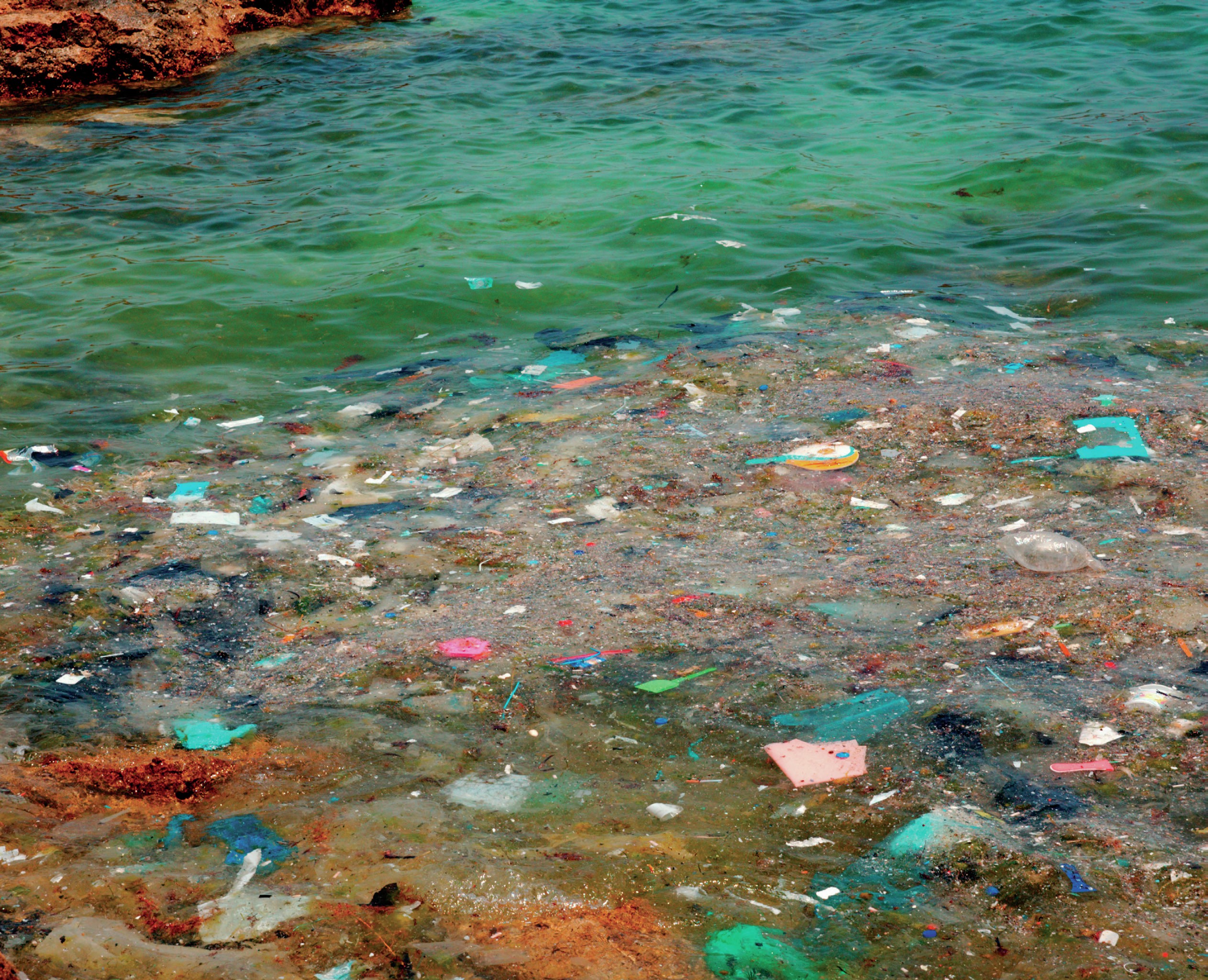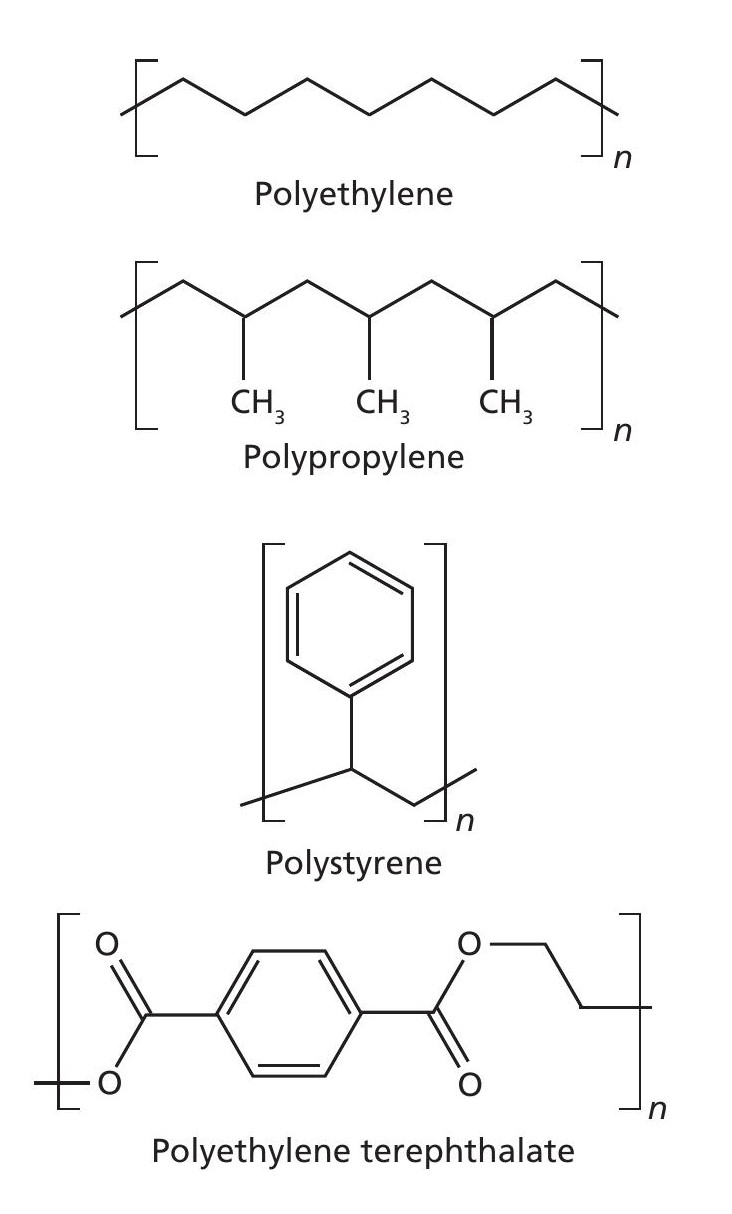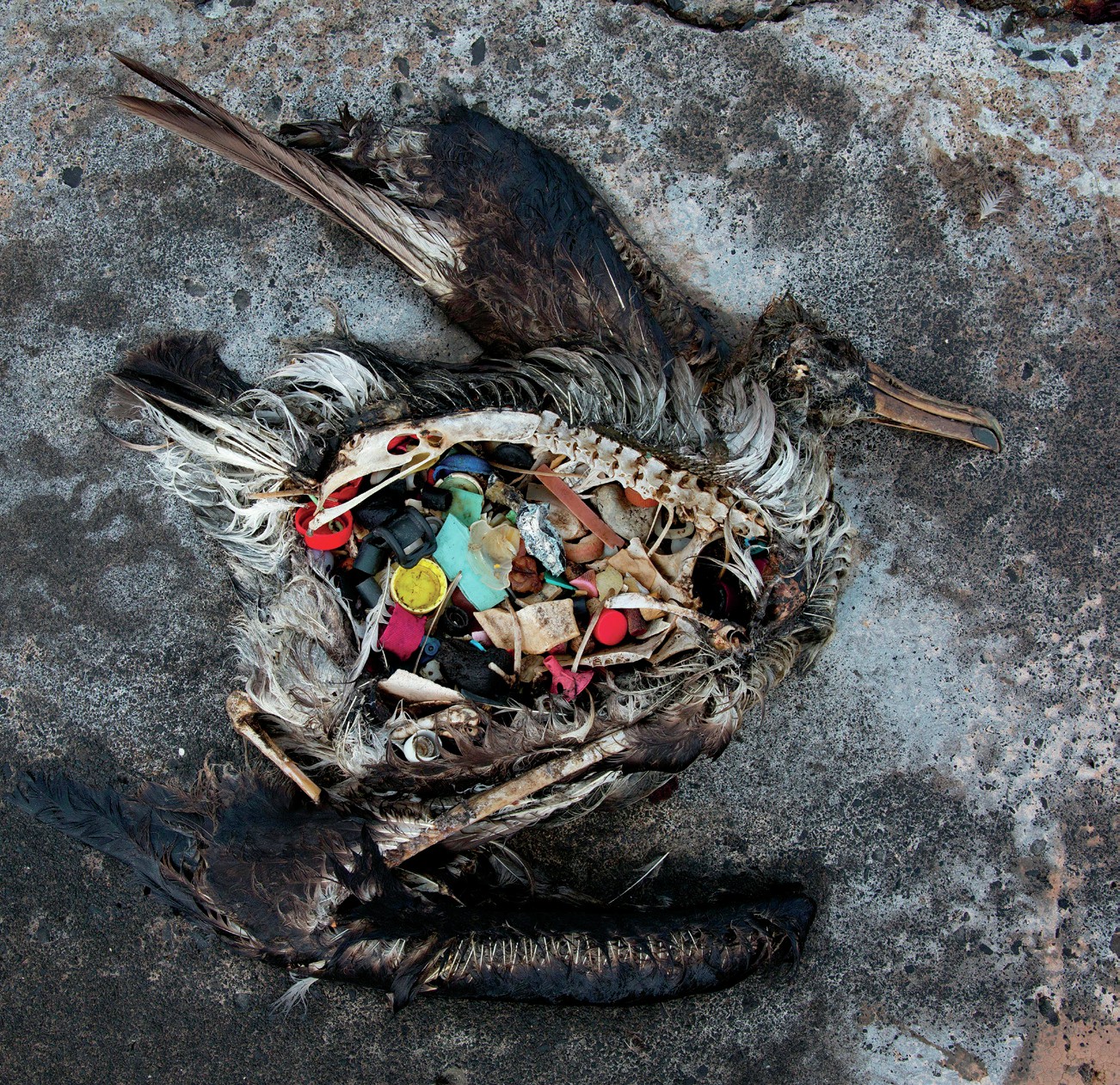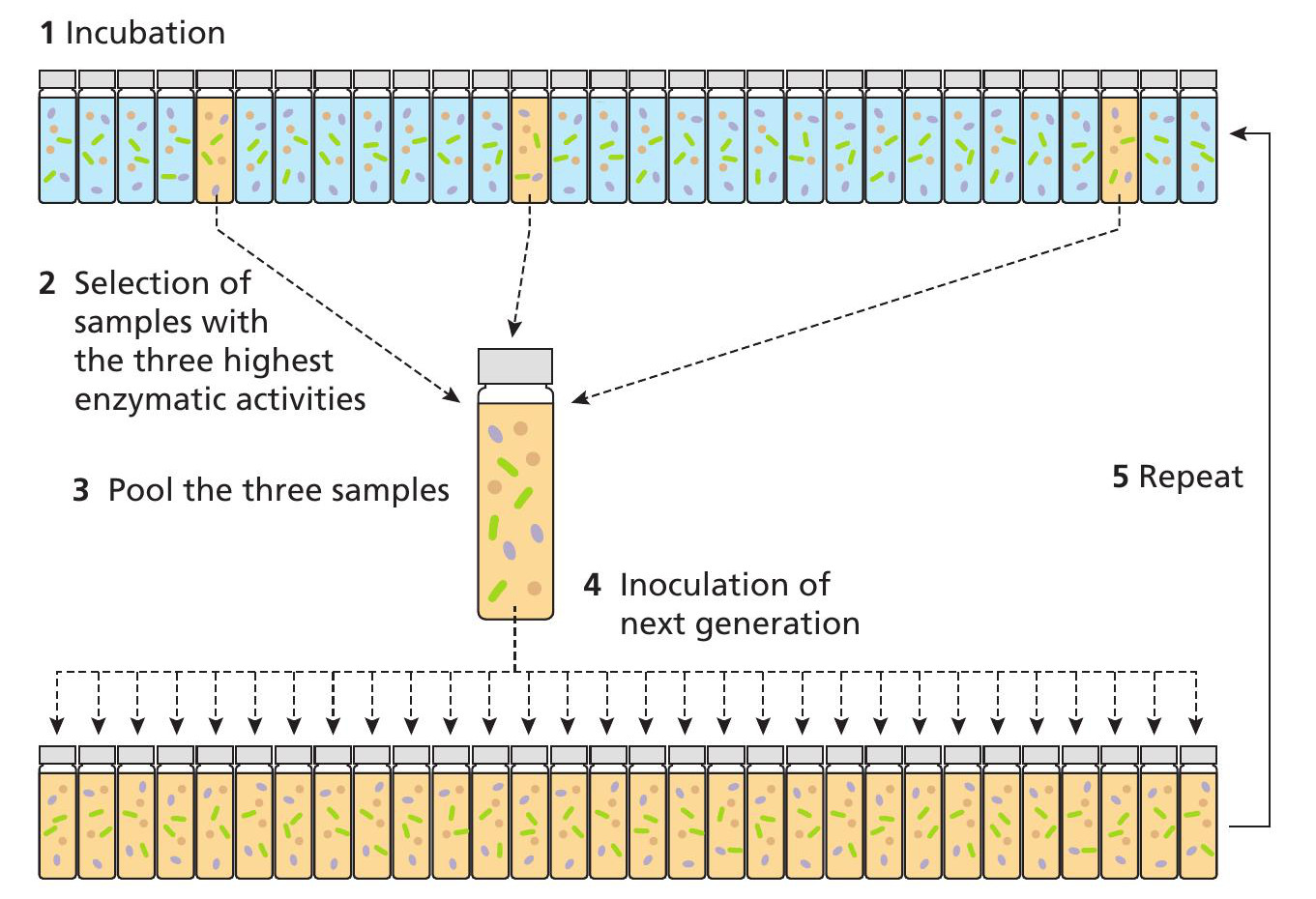Marine bacteria and the plastisphere
It is estimated that over 8 million tonnes of plastics are being added to the oceans each year. PhD student Robyn Wright explores potential microbiological solutions to the problem

AQA: 3.5.4 Nutrient cycles
Edexcel A: 4.15 Replacement of oil-based plastics; 5 On the wild side
Edexcel B: 10.4 Human effects on ecosystems
OCR A: 4.2.1(i) Conservation agreements; 6.3.2 Populations and sustainability
OCR B: 4.3.2(b) Impact of the rise in human population on ecosystems
WJEC Eduqas: 2.1.6 Human impact on the environment
Key words
Microplastics
Biodegradation
Marine biology
Microbiology
Recently the Ellen MacArthur Foundation stated, ‘By 2050 there will be, by weight, more plastics than fish in the oceans!’ Plastic, from the Latin ‘plasticus’ or Greek ‘plastikos’, means ‘able to be moulded’ and is the term we use for the materials we derive from oil. Plastics are hydrocarbon polymers, predominantly made up of carbon and hydrogen, sometimes with other functional groups including esters. Many plastics are derivatives of very long chains of alkanes (see Figure 1).
We have been making plastics since the end of the nineteenth century and production is now hundreds of millions of tonnes annually. Unfortunately, the properties that make plastics so widely used underlie the reasons they are so hard to break down. This difficulty in breaking down plastics is heard in the phrase ‘it will take hundreds of years for plastics to break down in the ocean’. In reality, hundreds of years have not passed since the mass production of plastics began in the 1950s, so we do not know how long they will remain in the oceans. Current research suggests that plastics simply fragment into smaller and smaller pieces but never truly disappear. The Marine Debris Working Group in the USA estimates that over 8 billion tonnes of plastics have been produced since the 1950s — and almost half of this in the last 13 years. About 80% of the waste ends up in landfill or the environment.

Where are the plastics in the oceans?
Wherever we have looked in our oceans, we have found plastics. From coastal areas to the deep sea. From the Arctic to other unpopulated areas, such as the Chagos Archipelago in the Indian Ocean. Some plastics, such as polyethylene (PE), polypropylene (PP) and expanded polystyrene (PS), are less dense than seawater, so they float and are carried by ocean currents. These have a tendency to accumulate in gyres in the middle of the oceans, often termed ‘garbage patches’. Other plastics, including polyethylene terephthalate (PET) and polyvinyl chloride (PVC), are denser than seawater and so sink.
Floating plastics might also sink from the surface of the sea following colonisation by bacteria and the larvae of larger organisms. Scientists from the Woods Hole Oceanographic Institution in Massachusetts termed these colonising organisms the ‘plastisphere’, a microbiome for plastics. These bacterial communities are distinct from the surrounding seawater and from those that colonise natural surfaces in the ocean.
Unfortunately, plastics are also removed from the surface seawater by animals that ingest them, and are found in the faeces of animals including zooplankton, fish, seals and whales, which also sink.
How do plastics get into the oceans?
Plastics end up in the ocean by a number of different routes, such as fibres that are released each time we wash our clothes, or through microbeads in cosmetics such as face washes. Microbeads have now been widely banned in the UK, but there are loopholes allowing them in ‘leave on’ products, including makeup and sun cream. Other routes for plastic pollution include lost fishing gear such as nets and traps, or items lost from ships. The largest quantity of plastic pollution comes from the mismanagement of waste originating from land. Much rubbish enters the oceans from developing coastal countries that lack adequate sewage treatment or waste collections.
Why does it matter that plastics are in the oceans?
The effects of plastics on marine organisms can be both direct and indirect. The direct effects are usually through entanglement or ingestion. For example, fish will often seek out plastics to eat because when they have been colonised by the plastisphere they smell like food. When plastics are either manufactured to be microplastics or break down into small pieces from larger plastics, they become accessible to more organisms. Indeed, plastics bioaccumulate and thus have a greater effect on animals at the top of food chains. Often, ingested plastics pass through digestive systems, but many microplastics in the oceans are fibres and can clump together, becoming obstructive.
Plastics are manufactured with chemical additives — many are toxic, and other poisonous hydrophobic chemicals have been found on plastics at concentrations a million times higher than the surrounding sea water. This can lead to indirect effects via transfer to animals either when they are eaten or through contact. Because plastics are able to travel large distances in the oceans, the biological accessibility of the associated toxin is increased. Such chemical effects can potentially include reproductive failure, hormonal defects, growth of tumours and even death.
Box 1 A youth-driven challenge
‘Bye Bye Plastic Bags’ was founded in 2013 by Melati and Isabel Wijsen. Melati was 12 and Isabel just 10 years old. They had grown up on the Indonesian island of Bali, and seeing the pollution there inspired the sisters to act. Together, they collected over 77 000 signatures supporting a ban on plastic bags in Bali, which local government has enforced since January 2018. This was not the end of their journey, and they continue to campaign for ‘a world free of plastic bags and where the young generation are empowered to take action’. Speaking in March 2018 at the International Marine Debris Conference in San Diego, Melati stated, ‘youth are 25% of the population, but 100% of the future’. They continue to win awards and attend international conferences to publicise this youth-driven challenge.

What are we doing to clean up the oceans?
Many scientists are researching the main sources of plastics in the oceans, where they end up, and what the effects of these plastics are. This will help to advise policy makers on strategies for cutting down the plastic waste that reaches the ocean, which areas need to be targeted for clean-up, and how we can improve our efficiency in removing plastics before they reach the oceans.
Importantly, some bacteria and fungi in landfills and soils have been shown to be capable of degrading plastics. Could these organisms also be present in the ocean? The terrestrial microorganisms tend to be relatively slow at degrading plastics, generally taking months for a noticeable difference in plastic mass to be observed. Additionally, the process only takes place at relatively high temperatures (optimum temperature of these microbial enzymes is typically above 60°C). So, can we do anything to speed up these processes?

How do bacteria break down plastics?
A group of Japanese scientists discovered a bacterium (Ideonella sakaiensis) that can break down PET, the polymer from which most plastic bottles are made, and characterised the enzymes that the bacterium used (see Figure 2). The bacteria were found to attach to the plastic and then release an enzyme called PETase, which breaks the PET into monomers (mono(2-hydroxyethyl) terephthalate, ethylene glycol and terephthalic acid). These monomers are taken up through bacterial membranes. The bacteria are able to break down these monomers and use them as an energy source, producing carbon dioxide and water. In April 2018, a team of scientists at the University of Portsmouth, UK, managed to engineer this enzyme to increase its efficiency. While this is significant, it will realistically still take many months for there to be a noticeable change in plastics degraded by this enzyme.

The ocean is too cold…
The enzymes so far found to break down plastics in a terrestrial environment have relatively high optimum temperatures. At the surface of the ocean, the average global temperature is approximately 16°C, but the average depth of the ocean is 3500 metres. Sunlight only reaches down to approximately 200 metres and the majority of the oceans are therefore cold, about 0–3°C. It is difficult to find enzymes that are active at these temperatures. Further, plastics are challenging to degrade. Their breakdown requires several steps using several different enzymes. It has therefore been suggested that a community of microorganisms may be more able to degrade plastics than an individual species or a single enzyme.
My research group at The University of Warwick, UK, is currently trying to select plastic degrading communities of microorganisms. In the laboratory we are testing microorganisms that colonise plastics from coastal waters around the UK. First, using an ‘enrichment experiment’: communities are left with the plastics as the only carbon source to see if any survive. Second, we take many replicate communities and test the activity of enzymes that could be involved with plastic degradation (see Figure 3). Subsequently, communities with the highest activities are mixed. This is carried out over 20 times to select communities that can become better at degrading plastics over time. This technique is reminiscent of selective breeding of animals and plants but is far more complex.

Currently the technique has been used to find microbial communities able to degrade chitin, the natural polymer present in the shells of crustaceans. We have demonstrated that, within 1 month of growth, a community could be selected to have increased chitinase activity up to 90 fold. Analysis of this community by DNA sequencing shows that thousands of different species are present. These include bacteria able to degrade chitin, bacteria able to use the products of chitin degradation, and eukaryotes, including protoctists, that feed on the bacteria. Now we know the technique works, investigations using PET are in progress. Microbial communities may help us in the future to finally degrade the plastics with which we pollute our oceans.
Terms explained
Gyres A large system of circular ocean currents formed by global wind patterns and forces created by the Earth’s rotation. The largest ones are found in the middle of oceans.
Microbeads Microplastics found in cosmetics and toiletries.
Microbiome All of the microorganisms in a particular environment.
Microplastics Plastics below 5 mm in size.
Plastisphere The microorganisms colonising the outside of plastic marine debris. It is usually distinct from the surrounding seawater and includes bacteria that could degrade plastics as well as potential pathogens.
Polymers Materials with a molecular structure primarily made of a large number of the same units (monomers) bonded together.
Sequencing DNA sequencing is the process of determining the order of nucleotides in a DNA molecule. This is used for whole communities of microorganisms in order to identify what is there, even when we cannot see it.
Further reading
Keep up to date and learn more about the group that Robyn is working with at The University of Warwick: www.christieoleza-lab.com
Read about the Ellen MacArthur Foundation proposals for sustainable ‘circular economies’: https://tinyurl.com/y7sbsvxz
‘Our campaign to ban plastic bags in Bali’, TED talk by Melati and Isabel Wijsen: https://tinyurl.com/jgfgkhe
‘Bye Bye Plastic Bags’, a movement powered by youth around the world to say ‘no’ to plastic bags: www.byebyeplasticbags.org
New plastic-munching bacteria could fuel a recycling revolution’, a news article about Ideonella sakaiensis: https://tinyurl.com/zjqp2yz
‘Recycling hope for plastic-hungry enzyme’, a news article about engineered PETase: https://tinyurl.com/ydgettak
Key points
• Plastics are key polluters of the marine environment.
• Plastics, and the molecules associated with them, are toxic to a wide range of organisms, both physically and chemically.
• Biodegradation of plastics by single species of microbes is at best slow.
• Microbial communities are likely to be more efficient at plastic removal than an individual species or a single enzyme.





